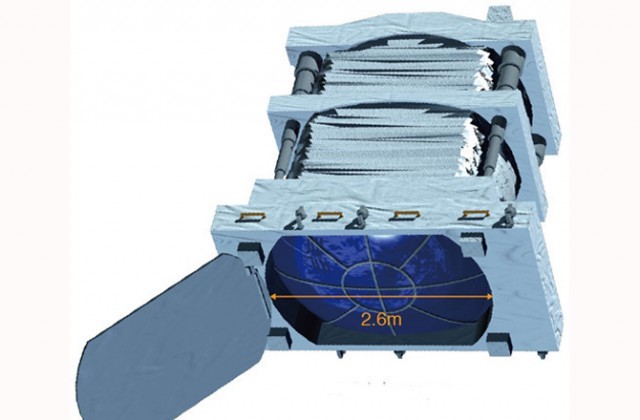
The low Earth orbit in which the International Space Station (ISS) resides is very a dangerous place. At only 211.3 mi (340 km) above sea-level, the space station must constantly strive to avoid colliding with the 3,000 or so tons of space junk that currently orbits around the Earth in this altitude.
In the past, the ISS responded to presence of the largest pieces of debris by slightly altering its trajectory to shift out of the way. Now, researchers from Japan’s Riken Computational Astrophysics Laboratory are proposing that the ISS be outfitted with a special laser system capable of blowing up any debris that wanders within range. These objects — typically composed of discarded rocket boosters, decoupling rings, and small objects like screws — are able to travel at upwards of 20,000 miles per hour relative to station, effectively transforming even the smallest object into high impact projectile.
The ISS’ standard protocol dictates that the crew scurry into escape pods anytime a piece of debris gets too close for comfort, but new more offensive approach will be operational at some point in 2017, after its installed on Japan’s ISS module; unsurprisingly, as Japan’s been aching to create a space fighting force for years.
Astrophysicists Toshikazu Ebisuzaki explains that the laser module was not initially intended for destructive purposes, but as a sensor for monitoring ultraviolet emissions entering Earth’s atmosphere; its Coherent Amplification Network (CAN) laser is a 100,000 watt ultraviolet laser capable of emitting 10,000 pulses per second, giving the beam a 60 mile reach, more than enough to vaporize the surface of the debris and create inertia in the opposite direction.

Of course, like all ambitious space projects, the CAN laser is still simply a proposal with years ahead of its realization. In the meantime, a miniature 10-watt replica that fires 100 pulses a second will be outfitted on the Extreme Universe Space Observatory (EUSO) telescope module when it reaches the ISS around 2017 or 2018.
Should the prototype and its larger CAN cousin prove effective, laser-mounted weaponry may become standard satellite equipment. At least, until nations take their cyberwar into our Earth’s orbit, malicious hacking and blasting one other’s satellites.
Source: Extremetech via Space.com
Advertisement
Learn more about Electronic Products Magazine





